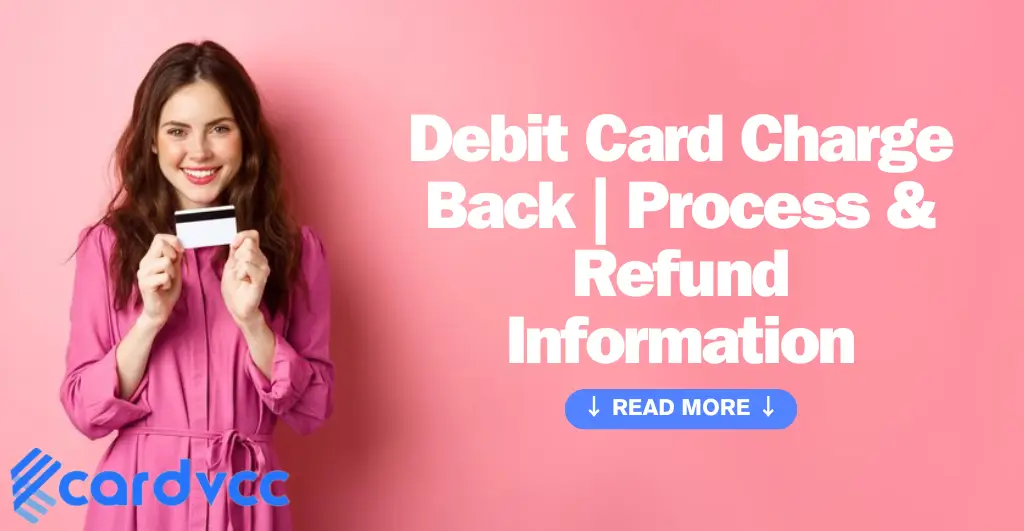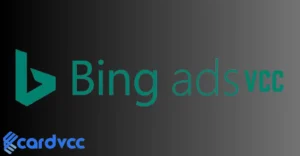A debit card chargeback is a reversal of a transaction initiated by the cardholder through their bank. This process is often used to dispute unauthorized or fraudulent charges.

Debit card chargebacks offer consumers a safety net against unauthorized or incorrect transactions. They empower cardholders to dispute charges and potentially recover their money. Common reasons for initiating a chargeback include fraudulent activity, billing errors, or services not rendered. The process usually involves contacting the bank, providing evidence, and waiting for the investigation’s outcome.
Understanding the chargeback process can help consumers protect their finances and ensure fair transaction practices. By being proactive and informed, cardholders can effectively manage disputes and maintain financial security.
Introduction To Chargebacks
A chargeback is a way to get your money back. It helps protect you when things go wrong with your debit card. Knowing about chargebacks can save you from losing money.
What Is A Chargeback?
A chargeback is a process where your bank reverses a debit card transaction. This happens when you ask for it due to an error or problem.
- It is like a refund but from the bank.
- It protects you from fraud and mistakes.
- It can take some time to process.
Common Reasons For Chargebacks
There are many reasons why you might need a chargeback. Here are some of the most common:
| Reason | Description |
|---|---|
| Fraud | Someone used your card without permission. |
| Billing Errors | You were charged twice or charged the wrong amount. |
| Goods Not Received | You paid for something but never got it. |
| Defective Goods | You got something broken or not as described. |
Knowing these reasons can help you understand when to ask for a chargeback. Always check your bank statements. This way, you can spot any problems quickly.
How Debit Card Chargebacks Work
Debit card chargebacks protect consumers from unauthorized transactions. They provide a way to get your money back. This process can save you from fraud or errors.
Initiating A Chargeback
If you notice a suspicious charge, act fast. Contact your bank immediately. Explain the issue clearly. Provide any supporting documents, like receipts or statements.
The bank will review your case. They may ask for more details. Respond quickly to any requests. This helps speed up the process.
Timeline And Process
After you report the issue, the bank starts an investigation. This can take up to 30 days. The bank will contact the merchant.
The merchant must respond within a set time. Usually, they have 45 days. The bank reviews their response. If the merchant can’t prove the charge is valid, you get your money back.
| Step | Description | Timeline |
|---|---|---|
| 1 | Contact your bank | Immediately |
| 2 | Submit supporting documents | Within a few days |
| 3 | Bank investigates | Up to 30 days |
| 4 | Merchant responds | Within 45 days |
| 5 | Resolution | After review |
Eligibility Criteria
Understanding the Eligibility Criteria for a debit card chargeback is crucial. This helps you know when you can get your money back. Below, we break down the requirements.
Valid Reasons For Chargebacks
Here are some valid reasons you can request a chargeback:
- Unauthorized Transactions: If your card is used without your permission.
- Billing Errors: Charges that are incorrect or duplicated.
- Goods Not Received: You paid but did not get the product.
- Defective Products: Items that are damaged or not as described.
- Service Not Rendered: The service you paid for was not provided.
Ineligible Transactions
Some transactions do not qualify for chargebacks:
- Authorized Transactions: You approved the payment.
- Time-Barred Claims: Requests made after the allowed period.
- Non-Fraudulent Purchases: Legitimate purchases you now regret.
- Cash Withdrawals: Money taken out from ATMs.
Knowing the Eligibility Criteria helps in making a successful claim. Ensure your reason fits within valid criteria.
Documentation Requirements
Understanding the documentation requirements for a debit card chargeback is crucial. Proper documentation can strengthen your case. It helps you recover disputed funds effectively. Learn what documents you need and how to gather them.
Necessary Documentation
To file a debit card chargeback, specific documents are needed. Ensure you include the following:
- Transaction Receipt: Proof of purchase showing date and amount.
- Bank Statement: Highlight the disputed transaction.
- Communication Records: Emails or messages with the merchant.
- Proof of Return: Evidence that you returned the item.
- Police Report: Needed if it involves fraud.
How To Gather Evidence
Collecting evidence for a chargeback involves several steps. Follow this guide to ensure you have everything needed:
- Save Receipts: Always keep your purchase receipts.
- Take Screenshots: Capture online transactions and chats.
- Keep Emails: Save all email communications with the merchant.
- Document Issues: Write down any problems or disputes.
- Contact Bank: Notify your bank and follow their guidelines.
Using a table can also help organize your documents:
| Document | Purpose |
|---|---|
| Transaction Receipt | Proof of purchase |
| Bank Statement | Highlight disputed transaction |
| Communication Records | Show attempts to resolve the issue |
| Proof of Return | Evidence of item return |
| Police Report | Required for fraud cases |
Impact On Consumers
Debit card chargebacks can significantly affect consumers. Understanding their impact is crucial for financial well-being. This section delves into how chargebacks protect consumers and their financial implications.
Consumer Protections
Debit card chargebacks offer strong consumer protections. They allow consumers to dispute unauthorized transactions.
Consumers can request a chargeback for:
- Goods not received
- Defective products
- Billing errors
These protections ensure consumers do not lose money unfairly. Banks and merchants must resolve disputes promptly.
Financial Implications
Chargebacks can have financial implications for consumers. A successful chargeback can refund lost funds.
However, the chargeback process can take time. While waiting, consumers might face temporary financial strain. It’s important to document and track disputes carefully.
| Scenario | Impact |
|---|---|
| Unauthorized transaction | Possible immediate refund |
| Goods not received | Refund or replacement |
| Billing error | Correction of the charge |
Understanding these implications helps consumers navigate financial challenges. It is important to know your rights and act swiftly.

How Virtual Credit Cards Help in Avoiding Cyber Fraudulent Activities
Online shopping is fun. But it can also be risky. Cyber fraud is a big problem. It makes people lose money. Cyber fraud means stealing your details online. Bad people use your information to buy things. This is very scary. But, there is a way to stay safe. This way is using virtual credit cards.
What Are Virtual Credit Cards?
Virtual credit cards are like regular credit cards. But they are not made of plastic. They are digital. You can use them only online. They have a special number, just like real cards. You can use them for online shopping. They help keep your real card details safe.
How Do Virtual Credit Cards Work?
Virtual credit cards work simply. You get a new card number from your bank. This number is used only for online shopping. When you buy something, you use this number. The real card details stay hidden. No one can see your real card number.
Benefits of Virtual Credit Cards
Virtual credit cards have many benefits. They help keep your money safe. Here are some benefits:
- Extra Layer of Security: Virtual cards keep your real details hidden.
- Control Over Spending: You can set limits on your virtual card.
- Easy to Create: You can create them quickly.
- Temporary Use: You can use them for one-time purchases.
- Protection from Fraud: They help avoid cyber fraud.
Extra Layer of Security
Virtual credit cards give an extra layer of security. Your real card details stay hidden. Only the virtual card details are used. This means if someone steals the virtual card number, they cannot access your real card.
Control Over Spending
With virtual credit cards, you can control your spending. You can set a limit on the card. This means you can only spend a certain amount. Once the limit is reached, no more money can be spent. This helps you avoid overspending.
Easy to Create
Creating a virtual credit card is easy. You do not need to wait for a plastic card. You can create a virtual card instantly. Many banks offer this service. Websites like Cardvcc also help create virtual credit cards quickly.
Temporary Use
Virtual credit cards are great for temporary use. You can use them for one-time purchases. After that, you can cancel the card. This means even if someone steals the card, they cannot use it again.
Protection from Fraud
Virtual credit cards protect you from fraud. If someone steals your virtual card number, they cannot access your real card. This means your real money stays safe. Cyber fraud is less likely to happen with virtual credit cards.
How to Get a Virtual Credit Card
Getting a virtual credit card is easy. Here are the steps:
- Log in to your bank account.
- Go to the credit card section.
- Find the option for virtual credit cards.
- Follow the instructions to create a virtual card.
- Set a limit on the card.
- Start using your virtual card for online shopping.
Using Cardvcc to Create Virtual Credit Cards
Cardvcc is a website that helps you create virtual credit cards. It is very easy to use. Here is how you can use Cardvcc:
- Visit Cardvcc.
- Sign up for an account.
- Choose the type of virtual card you want.
- Enter your details.
- Get your virtual credit card instantly.
Virtual credit cards are very helpful. They keep your money safe. They help avoid cyber fraud. You can control your spending. They are easy to create. You can use them for temporary purchases. Websites like Cardvcc make it easy to create virtual credit cards. Using virtual credit cards is a smart way to stay safe online.
Impact On Merchants
Debit card chargebacks can greatly affect merchants. They may face financial losses and increased operational stress. Understanding the impact on merchants is crucial for managing these challenges.
Merchant Responsibilities
Merchants have several responsibilities to manage chargebacks effectively:
- Accurate Record-Keeping: Maintain detailed transaction records.
- Prompt Response: Respond to chargeback notifications quickly.
- Evidence Submission: Provide supporting evidence to dispute chargebacks.
- Fraud Prevention: Implement measures to prevent fraudulent transactions.
Merchants must also ensure customer satisfaction. This helps reduce the occurrence of chargebacks.
Potential Consequences
Chargebacks can lead to several negative consequences for merchants:
| Consequence | Description |
|---|---|
| Financial Loss | Merchants may lose revenue from disputed transactions. |
| Increased Fees | Banks may impose higher fees for frequent chargebacks. |
| Account Termination | Excessive chargebacks can result in the closure of merchant accounts. |
| Reputation Damage | Chargebacks can harm a merchant’s reputation with banks and customers. |
Merchants should strive to minimize chargebacks. This helps maintain a healthy business environment.
Preventing Chargebacks
Chargebacks can be a major issue for both consumers and merchants. They often lead to financial losses and strained relationships. Preventing chargebacks is essential for maintaining a healthy financial ecosystem. Here are some best practices for consumers and merchants to avoid chargebacks.
Best Practices For Consumers
Consumers can take several steps to minimize the risk of chargebacks. By following these best practices, you can ensure smoother transactions and fewer disputes.
- Keep Records: Always keep receipts and transaction records.
- Review Statements: Regularly check your bank statements for any discrepancies.
- Communicate with Merchants: Contact the merchant directly before disputing a charge.
- Secure Your Card: Protect your debit card information and avoid sharing it.
- Understand Policies: Be aware of the merchant’s return and refund policies.
Best Practices For Merchants
Merchants play a crucial role in preventing chargebacks. By implementing these best practices, you can reduce the likelihood of chargebacks and maintain customer trust.
- Clear Descriptions: Provide clear product and service descriptions.
- Transparent Policies: Clearly state your return and refund policies.
- Verify Orders: Verify customer details to prevent fraudulent transactions.
- Efficient Customer Service: Offer prompt and effective customer support.
- Secure Transactions: Use secure payment gateways to protect customer data.
Following these best practices can significantly reduce the chances of chargebacks. Both consumers and merchants can benefit from smoother, dispute-free transactions.
Resolving Disputes
Resolving disputes with a debit card chargeback can seem tough. But, with the right steps, it becomes straightforward. Here, we will guide you through the process.
Steps To Resolve A Dispute
- Contact Your Bank: Start by calling your bank’s customer service. Explain your issue clearly. Provide all relevant details like transaction date and amount.
- Submit Evidence: Gather evidence to support your claim. This can include receipts, emails, or screenshots. Make sure all documents are clear and legible.
- Fill Out Forms: Your bank may ask you to fill out a dispute form. Complete this form accurately and submit it promptly.
- Follow-up: Keep track of your dispute status. Regularly check in with your bank for updates. Patience and persistence are key.
When To Seek Legal Help
Sometimes, disputes may not be resolved easily. If you face continuous issues, consider legal help. Legal experts can guide you through complex situations.
| Situation | Action |
|---|---|
| The bank refuses your claim | Consult a legal advisor |
| Fraudulent activity | File a police report |
| High-value disputes | Seek legal counsel |
Legal help can make a significant difference. It can ensure you get your rightful claim. Always keep detailed records of all communications and transactions.
Future Of Chargebacks
The future of debit card chargebacks is evolving rapidly. Technological advancements and emerging trends are shaping this landscape. Understanding these changes can help businesses and consumers stay prepared.
Technological Advancements
Technology is revolutionizing the chargeback process. Artificial Intelligence (AI) is playing a crucial role. AI helps detect fraudulent activities quickly. Machine Learning (ML) is enhancing fraud detection systems. ML algorithms learn from past data. This helps in predicting future chargebacks more accurately. Blockchain technology is also making strides. It ensures transparent and secure transactions. Blockchain reduces the chances of chargebacks due to fraud.
Another key advancement is biometric authentication. Fingerprint and facial recognition add an extra layer of security. This reduces unauthorized transactions and subsequent chargebacks. Tokenization is another game-changer. It replaces sensitive card information with unique tokens. This makes it harder for fraudsters to misuse card details.
Predicted Trends
Several trends are expected to shape the future of chargebacks. One major trend is the rise of mobile payments. Mobile wallets and contactless payments are becoming popular. This shift may lead to new types of chargeback disputes. Regulatory changes are also on the horizon. Governments are implementing stricter fraud prevention measures. These regulations aim to protect consumers and businesses.
Another trend is the increased use of data analytics. Companies are leveraging big data to understand transaction patterns. This helps in identifying potential frauds before they happen. Customer education is also gaining importance. Educating customers about secure transaction practices can reduce chargebacks. Lastly, collaboration between banks and merchants is expected to increase. Joint efforts can lead to better fraud detection and prevention strategies.
| Technological Advancements | Predicted Trends |
|---|---|
| AI and ML for fraud detection | Rise of mobile payments |
| Blockchain for secure transactions | Stricter regulatory measures |
| Biometric authentication | Use of data analytics |
| Tokenization for data security | Customer education |
| Bank-merchant collaboration |

Frequently Asked Questions of Debit Card Charge Back
Can You Get A Chargeback On A Debit Card?
Yes, you can request a chargeback on a debit card. Contact your bank to dispute the transaction.
Can I Get My Money Back If I Paid By Debit Card?
Yes, you can get your money back if you pay by debit card. Contact your bank to initiate a dispute.
Can You Do A Chargeback From A Debit Account?
Yes, you can request a chargeback from a debit account. Contact your bank to initiate the process.
Why Would A Debit Card Chargeback?
A debit card chargeback occurs due to unauthorized transactions, billing errors, or disputes over goods and services. Customers request refunds.
Conclusion
Understanding debit card chargebacks can safeguard your finances. Stay informed and proactive to handle disputes efficiently. Always monitor your transactions and report discrepancies promptly. This ensures your hard-earned money remains secure, providing peace of mind. Stay vigilant, and you can navigate chargebacks with confidence.
Read More- Buy VCC the Right Way







